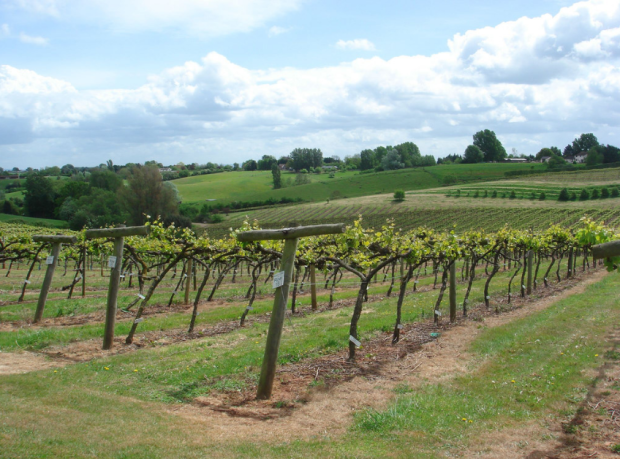You have no items in your cart. Want to get some nice things?
Go shopping
“What seasons fermented in Granny Wallon’s kitchen, what summers were brought to the boil.”
– Cider with Rosie, Laurie Lee [1]
For many people, the idea of a country wine has become an anachronism shelved somewhere neatly between the spines of Cider With Rosie and My Uncle Silas, or confined to half-remembered recollections of stories told to them by their grandparents. Often, these scenes evoke wines made from mysterious flowers and plants people can no longer identify readily, or, if they can, would no longer wish to pick owing to their relative rarity (the cowslip, flower of Northamptonshire, and favourite of Uncle Silas, for instance, falls into this group).
Even to Laurie Lee, whose deliciously well-pickled memories preserve the dusk of an England long-forgotten by modernity, the local forager and wine-maker Granny Wallon appears more of an alchemist than a cook with her vats of “revolving petals in throbbing water”. Whilst her potions possess a taste “as delicate as air” [2], her frugality and knowledge of field and hedgerow is perceived as a gift of magic: “If given enough sugar and yeast, [she] could have made a drink out of a box of old matches.” [3]
For all the perceptions of alchemy, however, the only thing complex about country wine is the wonderful palette of flavours that becomes available to you at little to no cost. The best of them can easily rival and even surpass much of what is available to us at the supermarket, and at a fraction of the price.
As forager and photographer Roger Phillips puts it: “There are two approaches that can be taken to making wines from wild fruits and flowers. The first aims to preserve the taste and flavour of the specific flower or fruit that has been collected, while the second is to produce a wine which is near as possible to a commercial wine made from grapes.” [4] I lean toward the former approach – generally being more interested in how I can infuse flavours from the things I find and have to hand than from indistinct, homogenised, and concentrated powders.
Like Granny Wallon, I begin my winemaking in April or May. I leave the first dandelions to the hungry early-waking bees, but glean the remains of the harvest before their fuzzy clock-heads can emerge and disgruntle my fellow allotmenteers. There is a delightful productivity to this kind of communal weed management, and the promise of a bottle or two always helps in the finding of a pair of helpful hands. These months are also the time of new rhubarb; versatile young nettle tops and tannin-rich young oak shoots and leaves.
True to John Clare’s Shepherd’s Calendar, the first weeks of May froth with sprays of hawthorn and elderflower filling the hedgerows with their intoxicating scent. From June the season starts to turn towards soft, then hard fruit through to autumn, reclining into the stores of root vegetables (parsnip wine being particularly delicious) to take the winemaker through the winter.
However, for all the wonders of little-known foraged ingredients, some of the finest country wines are made from the easiest species to grow and identify: raspberry and elderflower being two of my favourites. The making of elderflower champagne, for instance, is almost foolproof provided one pays attention before and during the bottling process (your hydrometer should read 1010, and be sure to use strong, clip-top bottles or champagne corks). The resultant young wine is worthy of a wedding feast, and few flavours better capture the first days of summer.
You can start your first batches of country wine using a few clip-top jars for the initial ferment before you invest in more kit (the basics should cost little over £10-£15). Wine yeast and demijohns can now be purchased relatively cheaply, and occasionally the latter turn up in second-hand shops if you have a canny eye. Just don’t buy from places trying to sell them as ornaments at extortionate prices. The most essential piece of kit with any type of brewing, however, is your notebook and pen – not only are good records important for fixing things when they go wrong, but I can’t emphasise enough how hard you will kick yourself when you have made a perfect batch and can’t remember what you put into it!
Of all forms of biochemistry, winemaking is one of the most fun, and the possibilities for experimentation are as diverse as Nature herself. It is a great way to make use of gluts and leftovers, and there are few gifts more personal and locally-distinctive than a homemade wine.
If you are lucky enough to have growing space, encourage neighbours to grow local varieties of fruit or get in touch with the nearby community garden or allotment to enquire about starting a community winemaking project. Here in Leicester, for instance, we make a brilliant dessert wine from overripe Syston White plums, which have sadly become very rare despite bearing excellent fruit.
This month, I’ve brewed up a nettle wine and have used some clippings from new oak growth for tannins, throwing in some leftover coriander stems for intrigue. The resulting ferment is a symphony of citrus and spice that I can’t wait to try.
[1] Lee, L., Cider with Rosie (London: Penguin, 1964), p.79.
[2] Ibid., p.80.
[3] Ibid.
[4] Philips, R., Wild Food, London: Pan Books, 1983, p.9.
For those wishing to try winemaking for the first time, John Wright’s book Booze, No.12 in the River Cottage series, makes for a very clear introduction to first principles.

About Concepta Cassar
Concepta is a journalist, forager and food writer, with a particular interest in food anthropology, sustainability, and agricultural affairs. Her recipes have been featured in the Guardian, and she writes for a number of organisations, including BuzzFeed, Aftertastes, and the Soil Association. Her other great loves are literature and modern languages. Concepta speaks French and Italian, and has a working knowledge of Spanish and Russian.





You are on the right path for having the best steps online.